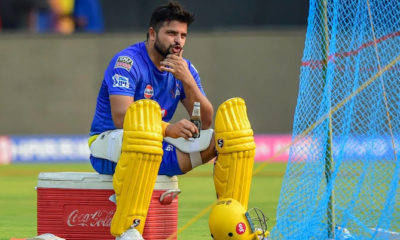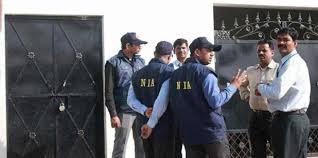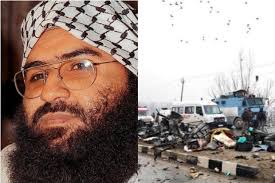Feature
Salwinder Singh , Punjab SP’s suspicious version on terrorist attack
 Pathankot: Is senior Punjab Police officer Salwinder Singh a suspect or a victim in the terrorist attack on the Pathankot air base?
Pathankot: Is senior Punjab Police officer Salwinder Singh a suspect or a victim in the terrorist attack on the Pathankot air base?
Investigating agencies, especially the NIA, are probing the police officer’s role in the incident for over 24 hours before the actual terror attack took place on Saturday.
The inconsistencies in the statements of Superintendent of Police Salwinder Singh, his cook Madan Gopal and his jeweller-friend Rajesh Verma, regarding the same incident have made investigators curious. This has led to the SP being put under the scanner. The National Investigation Agency (NIA) has been questioning all three since Tuesday evening.
One of the discrepancies in their statements is regarding the number of terrorists. While Verma, who travelled the most distance with the terrorists, said there were four terrorists, the police officer and his cook said they were 4-5 terrorists.
Another inconsistency was about the terrorists hitting them with rifle butts. While Verma and the cook had bodily injuries, the SP had none. Also, the SP claimed that he could not hear much of what the terrorists were talking among themselves. Verma said they talked to their “commander” and addressed each other as “alpha” and “major”.
Investigators are baffled by the fact that the terrorists killed the Innova taxi driver, Ikagar Singh, by slitting his throat and stabbing him and also attempted to slit the throat of the SP’s friend Verma, leaving him with injuries. Why did they spare the SP, who had not a scratch?
The police officer, Salwinder Singh, is claiming that he and two others were stopped in his Mahindra XUV and abducted by 4-5 heavily armed terrorists near Kolian village on Dec 31 night around 11.30.
He claimed that he and the cook were dumped in a drain in a forest area by the terrorists after some distance, unharmed, but with their hands, legs and mouths tied. He said that both his mobile phones were taken away by the terrorists.
The cook, Gopal, however, said that the police officer still had one phone with him with which he contacted his senior.
Th officer’s friend Rajesh Verma has claimed that the terrorists threw him in the boot of the multi-utility vehicle and drove towards the Pathankot air force base.
The questions being raised by investigators are:
Why was the SP travelling late in the night in the border belt? Why did he take that particular link road on the fateful night when, by his own admission, there was another road link to the shrine, where he claimed he had gone to offer prayers, in Kathua district of adjoining Jammu and Kashmir? He even claimed that he did not know anything about this ‘short-cut’ road.
Why was he not carrying his gunmen in the vehicle with him? Why was he not carrying his official weapon with him?
Being a police officer, shouldn’t he have resisted the terrorists even at the cost of his own life? If he and his companions had got into a scuffle with the terrorists and the terrorists had fired at them, their presence in the area would have been known more clearly.
Why didn’t he or his friend take any action, like throwing the keys, to somehow stop the terrorists from taking away the vehicle?
According to Salwinder Singh’s version, he untied himself and the cook after the terrorists dumped him and called up his superior officers around 3.30 a.m. to inform them about the terrorists.
However, he was not taken seriously. If his immediate seniors were not taking his version seriously, did he take any steps to inform top officers in Punjab Police?
His SUV was found later by the police, abandoned near Akalgarh village, not far from the Pathankot Air Force Station (AFS).
It was only after Punjab Police put the SP’s mobiles on surveillance that it was known that calls were made to Pakistan from these. This alerted the senior officers about the situation and it was shared with the concerned authorities in New Delhi.
Punjab Director General of Police (DGP) Suresh Arora said that there was no delay on the part of the state police in acting on the SP’s claims.
“It was for the first time that the NSG (National Security Guards) were deployed much before the attack. The alert was shared and arrangements were made,” Arora claimed.
Seven security personnel were killed in the pre-dawn attack by terrorists on the air base on Saturday. Six terrorists were killed with the combat operation ending on Monday evening.
Entertainment
Meghalaya Reserves Legalized Gambling and Sports Betting for Tourists

The State Scores Extra High on Gaming-Friendly Industry Index
Meghalaya scored 92.85 out of 100 possible points in a Gaming Industry Index and proved to be India’s most gaming-friendly state following its recent profound legislation changes over the field allowing land-based and online gaming, including games of chance, under a licensing regime.
The index by the UK India Business Council (UKIBC) uses a scale of 0 to 100 to measure the level of legalisation on gambling and betting achieved by a state based on the scores over a set of seven different games – lottery, horse racing, betting on sports, poker, rummy, casino and fantasy sports
Starting from February last year, Meghalaya became the third state in India’s northeast to legalise gambling and betting after Sikkim and Nagaland. After consultations with the UKIBC, the state proceeded with the adoption of the Meghalaya Regulation of Gaming Act, 2021 and the nullification of the Meghalaya Prevention of Gambling Act, 1970. Subsequently in December, the Meghalaya Regulation of Gaming Rules, 2021 were notified and came into force.
All for the Tourists
The move to legalise and license various forms of offline and online betting and gambling in Meghalaya is aimed at boosting tourism and creating jobs, and altogether raising taxation revenues for the northeastern state. At the same time, the opportunities to bet and gamble legally will be reserved only for tourists and visitors.
“We came out with a Gaming Act and subsequently framed the Regulation of Gaming Rules, 2021. The government will accordingly issue licenses to operate games of skill and chance, both online and offline,” said James P. K. Sangma, Meghalaya State Law and Taxation Minister speaking in the capital city of Shillong. “But the legalized gambling and gaming will only be for tourists and not residents of Meghalaya,” he continued.
To be allowed to play, tourists and people visiting the state for work or business purposes will have to prove their non-resident status by presenting appropriate documents, in a process similar to a bank KYC (Know Your Customer) procedure.
Meghalaya Reaches Out to a Vast Market
With 140 millions of people in India estimated to bet regularly on sports, and a total of 370 million desi bettors around prominent sporting events, as per data from one of the latest reports by Esse N Videri, Meghalaya is set to reach out and take a piece of a vast market.
Estimates on the financial value of India’s sports betting market, combined across all types of offline channels and online sports and cricket predictions and betting platforms, speak about amounts between $130 and $150 billion (roughly between ₹9.7 and ₹11.5 lakh crore).
Andhra Pradesh, Telangana and Delhi are shown to deliver the highest number of bettors and Meghalaya can count on substantial tourists flow from their betting circles. The sports betting communities of Karnataka, Maharashtra, Uttar Pradesh and Haryana are also not to be underestimated.
Among the sports, cricket is most popular, registering 68 percent of the total bet count analyzed by Esse N Videri. Football takes second position with 11 percent of the bets, followed by betting on FIFA at 7 percent and on eCricket at 5 percent. The last position in the Top 5 of popular sports for betting in India is taken by tennis with 3 percent of the bet count.
Local Citizens will Still have Their Teer Betting
Meghalaya residents will still be permitted to participate in teer betting over arrow-shooting results. Teer is a traditional method of gambling, somewhat similar to a lottery draw, and held under the rules of the Meghalaya Regulation of the Game of Arrow Shooting and the Sale of Teer Tickets Act, 2018.
Teer includes bettors wagering on the number of arrows that reach the target which is placed about 50 meters away from a team of 20 archers positioned in a semicircle.
The archers shoot volleys of arrows at the target for ten minutes, and players place their bets choosing a number between 0 and 99 trying to guess the last two digits of the number of arrows that successfully pierce the target.
If, for example, the number of hits is 256, anyone who has bet on 56 wins an amount eight times bigger than their wager.



















